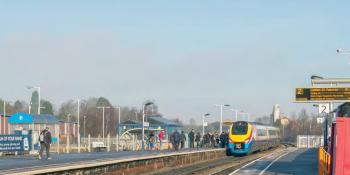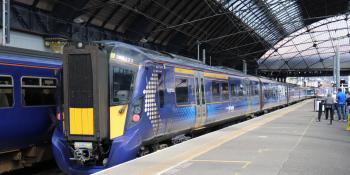The renaissance at Glasgow Queen Street has involved improved facilities for passengers and a facelift for the station’s public presence – both have been long overdue.
The station’s story began as a ‘snip’ in 1838 when the bargainhunting chairman of the Edinburgh & Glasgow Railway Company, John Leadbetter, bought ground that had been quarried for its blond sandstone. This had supplied material for the westward expansion of the growing city. George Square, with its stately Georgian terraces, had been in existence since the 1820s, and the station’s timber shed would be squeezed in on its northwest corner behind an imposing church in classical style.
It was an appealing site – within walking distance of the city centre that was then in the Trongate (now in Argyle Street) – but it had a problem. The railway’s exit northwards would require a tunnel with an inclined plane, operated by a large stationary engine at Cowlairs. Trains would be assisted up a 1-in-41 slope by rope haulage. This solution was not exceptional at that time – Queen Street station opened in 1842 once the Edinburgh & Glasgow Railway was complete to Haymarket. Both Euston in its early days and Liverpool Lime Street (until 1870) had such installations.



